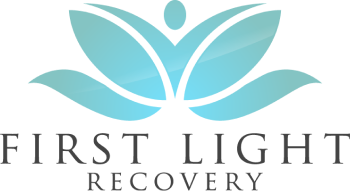Understanding Anxiety Disorders
Anxiety disorders are mental health conditions characterized by persistent and excessive worry or fear. These disorders often have profound effects on individuals’ physical health, and choosing the right support can make a significant difference in recovery.
Impact of Anxiety on Health
Anxiety disorders can adversely impact overall health, particularly cardiovascular health. Studies have shown that anxiety can be a major contributing factor to heart disease. Individuals with existing heart conditions may experience worsening physical symptoms due to anxiety, which can put additional strain on the heart.
Moreover, anxiety can hinder recovery in heart attack and heart disease patients by affecting adherence to treatment plans. The intense fear and uncertainty connected to anxiety can impede one’s ability to follow medical advice, further complicating recovery efforts (Johns Hopkins Medicine).
| Health Impact | Description |
|---|---|
| Heart Disease Risk | Anxiety can contribute to heart disease by creating additional strain on the heart. |
| Recovery Complications | Anxiety can hinder adherence to treatment plans, affecting recovery outcomes. |
Types of Anxiety Disorders
Anxiety disorders encompass several different diagnostic categories, each with distinct characteristics. The most common types include:
- Panic Disorder: Characterized by recurrent and unexpected panic attacks, along with the fear of future attacks.
- Generalized Anxiety Disorder (GAD): Involves excessive worry about a variety of aspects of daily life, often accompanied by physical symptoms.
- Social Anxiety Disorder: The intense fear of social situations where one may be judged or scrutinized by others.
- Post-Traumatic Stress Disorder (PTSD): Occurs after experiencing or witnessing a traumatic event and often includes flashbacks, avoidance, and heightened anxiety.
Anxiety disorders are notably prevalent, particularly among women who are twice as likely to experience conditions such as panic disorder and PTSD due to various sociocultural factors (Johns Hopkins Medicine).
Understanding these types and their impacts on health is essential. We at First Light Recovery are dedicated to helping individuals navigate through their anxiety challenges and providing comprehensive mental and behavioral health services tailored to their needs. For more information on specific anxiety symptoms, consider visiting our resource on understanding the spectrum of anxiety disorders: from generalized anxiety to OCD.
Exploring Panic Disorder
Definition and Symptoms
Panic disorder is characterized by recurrent panic attacks, which are sudden episodes of intense fear without any real danger, leading to severe physical reactions. These episodes can occur unexpectedly at any time and can happen as frequently as several times a day or as rarely as a few times a year. Symptoms of panic attacks can include:
- Rapid heartbeat
- Sweating
- Trembling or shaking
- Shortness of breath
- Feelings of choking
- Chest pain
- Nausea or abdominal distress
- Dizziness, lightheadedness, or faintness
- Chills or hot flashes
- Numbness or tingling sensations
- Feelings of unreality or detachment from oneself
- Fear of losing control or “going crazy”
- Fear of dying
If these symptoms become recurrent and lead to persistent fear, individuals may be diagnosed with panic disorder.
Prevalence and Risk Factors
Panic disorder is not uncommon, affecting a significant number of people across various demographics. General estimates suggest that it occurs in about 2-3% of the population at some point in their lives. Risk factors associated with developing panic disorder can include:
- Familial history of panic disorders or other anxiety disorders
- Stressful life events, such as the death of a loved one or changes in job status
- Pre-existing mental health issues, such as depression or anxiety
- Substance abuse or withdrawal from drugs or alcohol
Individuals suffering from panic disorder may also experience associations with medical conditions. For example, panic disorder has a notable connection with gastrointestinal diseases and cardiac health issues. It is often overrepresented in noncardiac chest pain and irritable bowel syndrome (PubMed). Furthermore, there can be heart-related implications such as rapid heart rates, arrhythmias, and increased cardiovascular risk among those affected (NCBI).
Understanding the symptoms and prevalence of panic disorder is crucial. If you or a loved one is struggling, it’s important to seek assistance from qualified professionals. Our commitment at First Light Recovery is to provide top-rated mental health and behavioral health services tailored to meet individual needs.
Treatment Options for Panic Disorder
Understanding the most effective treatment options for panic disorder is crucial. At First Light Recovery, we focus on evidence-based methods that can help alleviate symptoms and improve overall well-being. Below, we delve into the two primary treatment modalities: psychotherapy and medication.
Psychotherapy
Psychotherapy is one of the mainstays of treatment for panic disorder. This therapeutic approach involves talking through your experiences and feelings with a trained professional. Cognitive Behavioral Therapy (CBT) is particularly effective for panic disorder, helping individuals learn to respond differently to anxiety-provoking sensations and thoughts during a panic attack. Research shows that CBT can significantly reduce the frequency and severity of panic attacks.
Key benefits of psychotherapy include:
- Skill Development: Patients learn coping strategies that can help them manage panic attacks and anxiety in daily life.
- Understanding Triggers: Therapy provides insights into personal triggers, giving individuals tools to address underlying fears.
- Emotional Support: It offers a safe space to express feelings and concerns, helping to reduce feelings of isolation.
It’s important to remember that therapy may take time to yield results, and regular sessions can enhance effectiveness. For more information, consider reading about understanding the spectrum of anxiety disorders: from generalized anxiety to OCD.
Medication
Medication can also play a vital role in managing panic disorder. Various types of medication may be prescribed based on individual needs. Specifically, healthcare providers may consider:
- SSRIs (Selective Serotonin Reuptake Inhibitors): Commonly prescribed to help increase serotonin levels in the brain, which influences mood and anxiety.
- SNRIs (Serotonin-Norepinephrine Reuptake Inhibitors): Often used for their dual action on serotonin and norepinephrine, these can help lift mood and reduce anxiety symptoms.
- Beta-Blockers: These can help manage physical symptoms of anxiety, such as rapid heart rate and tremors.
- Benzodiazepines: Prescribed for short-term relief of anxiety symptoms, these can be effective but carry a risk of dependency if used long-term.
Both psychotherapy and medication are effective methods for treating panic disorder, either individually or in combination. It may take time for medications to take effect, so it’s important to maintain open communication with your healthcare provider regarding your treatment plan.
For a deeper understanding of coping strategies and options available for managing anxiety, check out our articles such as effective coping strategies for managing social anxiety in daily life and how cognitive behavioral therapy assists in managing thought disorders.
Together, these approaches can significantly improve the quality of life for those affected by panic disorder.
Associations with Physical Health
Understanding the impact of panic disorder extends beyond psychological health; it encompasses various physical health domains as well. We need to examine the connections between panic disorder and gastrointestinal disease, as well as cardiac health, to comprehend the comprehensive ramifications of this condition.
Panic Disorder and Gastrointestinal Disease
Research has established a notable association between panic disorder and functional gastrointestinal diseases. Since the development of accurate diagnostic criteria for both psychiatric and functional gastrointestinal disorders, a clearer link has emerged (PubMed). Panic disorder is often overrepresented in individuals experiencing noncardiac chest pain and irritable bowel syndrome (IBS).
Studies indicate that approximately 40% of those with panic disorder report chronic pain, with 7.8% using analgesics daily. There is a significant correlation between panic disorder and somatic complaints. Those with panic disorder and chronic pain tend to score higher on various psychopathology measures than those without pain complaints (PubMed). This underscores the intricate connection between mental and physical health.
| Symptom Category | Panic Disorder Patients (%) |
|---|---|
| Reported Chronic Pain | 40 |
| Daily Analgesic Use | 7.8 |
Panic Disorder and Cardiac Health
Panic disorder is also linked to several forms of cardiac disease, which can manifest in numerous ways. Among these are elevated heart rates, arrhythmias, increased left ventricular mass and diameter, and reduced cardiovascular fitness. Patients experiencing panic attacks often exhibit heightened levels of B-type natriuretic peptide, a marker associated with heart stress (NCBI).
Furthermore, while some studies may present conflicting data, there is a recognized connection between panic disorder and coronary artery disease (CAD). This relationship may be attributed to shared cardiovascular risk factors such as hypertension, hyperlipidemia, and smoking.
| Cardiac Condition | Associated Features |
|---|---|
| Elevated Heart Rates | Common among panic disorder patients |
| Arrhythmias | Documented in panic attacks |
| Increased Left Ventricular Mass | Observed during panic assessments |
| Elevated B-type Natriuretic Peptide | Indicator of heart strain |
Understanding these associations helps highlight the importance of comprehensive treatment approaches that address both the psychological and physical aspects of panic disorder. If you or a loved one is seeking support, know that choosing First Light Recovery for mental health and behavioral health services can aid in this journey. Addressing these interconnected issues holistically can foster a path toward recovery and improved well-being.
Managing Panic Disorder
Panic disorder can significantly impact our physical health, but effective management strategies are available. Two commonly employed approaches are Cognitive Behavioral Therapy (CBT) and medication.
Cognitive Behavioral Therapy (CBT)
Cognitive Behavioral Therapy is a well-established treatment method for panic disorder. This form of psychotherapy helps individuals learn to react differently to the physical sensations of anxiety and fear that occur during a panic attack. By addressing negative thought patterns and teaching coping strategies, CBT can empower us to manage our reactions to anxiety-provoking situations more effectively (NIMH).
CBT typically involves several components, including:
- Identifying and changing negative thought patterns
- Learning relaxation techniques
- Gradual exposure to anxiety triggers
- Developing coping strategies for panic attacks
Studies show that CBT can lead to significant improvements in symptoms of panic disorder. With regular sessions, individuals often report reduced frequency and intensity of panic attacks, and enhanced coping mechanisms for anxiety.
Incorporating Medication
For many, the combination of psychotherapy and medication can enhance treatment efficacy for panic disorder. Health care providers may prescribe various medications, including:
| Medication Type | Example | Purpose |
|---|---|---|
| SSRI and SNRI Antidepressants | Escitalopram, Venlafaxine | Help balance neurotransmitters and improve mood |
| Beta-Blockers | Propranolol | Manage physical symptoms like rapid heartbeat |
| Benzodiazepines | Clonazepam | Provide quick relief from acute anxiety symptoms |
Both psychotherapy and medication may take time to work, and it’s essential to maintain open communication with health care providers throughout the treatment process (NIMH). Together, they can create a tailored treatment plan that addresses individual needs and challenges, fostering a path toward recovery.
Exploring treatment options is fundamental for managing panic disorder. At First Light Recovery, we offer comprehensive mental health services that can help you or your loved one navigate the complexities of panic disorder and its connection to physical health. If you’re seeking more information on mental health services, consider reviewing our resources on understanding the spectrum of anxiety disorders: from generalized anxiety to ocd.
Seeking Professional Help
Importance of Evaluation
For those experiencing panic disorder, seeking professional help is a crucial step toward understanding and addressing both mental and physical health. An accurate evaluation by a qualified mental health professional provides a clear picture of the disorder and its interplay with physical health conditions. Early diagnosis can lead to tailored treatment plans that significantly improve outcomes.
Panic disorder has been associated with numerous physical health issues, including heart disease and gastrointestinal disorders. A healthcare provider can perform assessments to identify any underlying health concerns and help individuals understand the link between their anxiety and physical symptoms.
Evaluations may include:
| Evaluation Type | Purpose |
|---|---|
| Psychological Assessment | Identify symptoms and severity of anxiety |
| Medical History Review | Assess any existing physical health issues |
| Physical Examination | Rule out other causes for symptoms |
For example, women are approximately twice as likely as men to experience panic disorder and related health issues (Mayo Clinic). Understanding these statistics can guide discussions about personal risks and treatment options.
Recovery and Adherence
Engagement in a recovery plan for panic disorder often entails both therapy and medication. Adherence to prescribed treatment is vital for sustainable recovery. Anxiety can interfere with an individual’s ability to follow through with treatment recommendations, particularly following a heart attack or in managing heart disease (Johns Hopkins Medicine).
Strategies for maintaining adherence to recovery plans include:
- Regular follow-up appointments to monitor progress
- Setting realistic goals for treatment milestones
- Involvement in support groups for ongoing encouragement
- Utilizing digital tools or apps to track progress and manage symptoms
Understanding the connection between panic disorder and physical health can empower individuals to seek support actively. We encourage individuals facing these challenges or their loved ones to explore treatment options at First Light Recovery. Seeking help is the first step to achieving wellness and effectively managing the interplay of anxiety and physical health.




